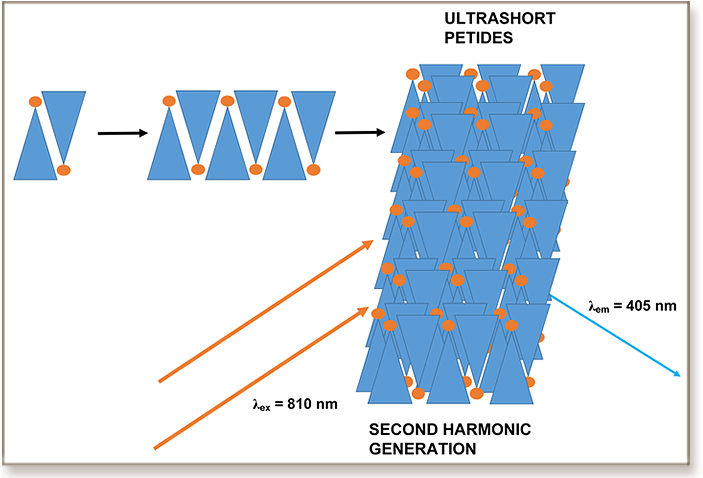
Self‐assembling amyloid‐like peptides as exogenous second harmonic probes for bioimaging applications
M. Ni, Sh. Zhuo, C. Iliescu, P.T.C. So, J.S. Mehta, H. Yu, C.A.E. Hauser
Journal of Biophotonics, 2019

Amyloid‐like peptides are an ideal model for the mechanistic study of amyloidosis, which may lead to many human diseases, such as Alzheimer disease. This study reports a strong second harmonic generation (SHG) effect of amyloid‐like peptides, having a signal equivalent to or even higher than those of endogenous collagen fibers. Several amyloid‐like peptides (both synthetic and natural) were examined under SHG microscopy and shown they are SHG‐active. These peptides can also be observed inside cells (in vitro). This interesting property can make these amyloid‐like peptides second harmonic probes for bioimaging applications. Furthermore, SHG microscopy can provide a simple and label‐free approach to detect amyloidosis. Lattice corneal dystrophy was chosen as a model disease of amyloidosis. Morphological difference between normal and diseased human corneal biopsy samples can be easily recognized, proving that SHG can be a useful tool for disease diagnosis.

"KAUST shall be a beacon for peace, hope and reconciliation, and shall serve the people of the Kingdom and the world."
King Abdullah bin Abdulaziz Al Saud, 1924 – 2015
Thuwal 23955-6900, Kingdom of Saudi Arabia
Al-Haytham Building (Bldg. 2)
© King Abdullah University of Science and Technology. All rights reserved